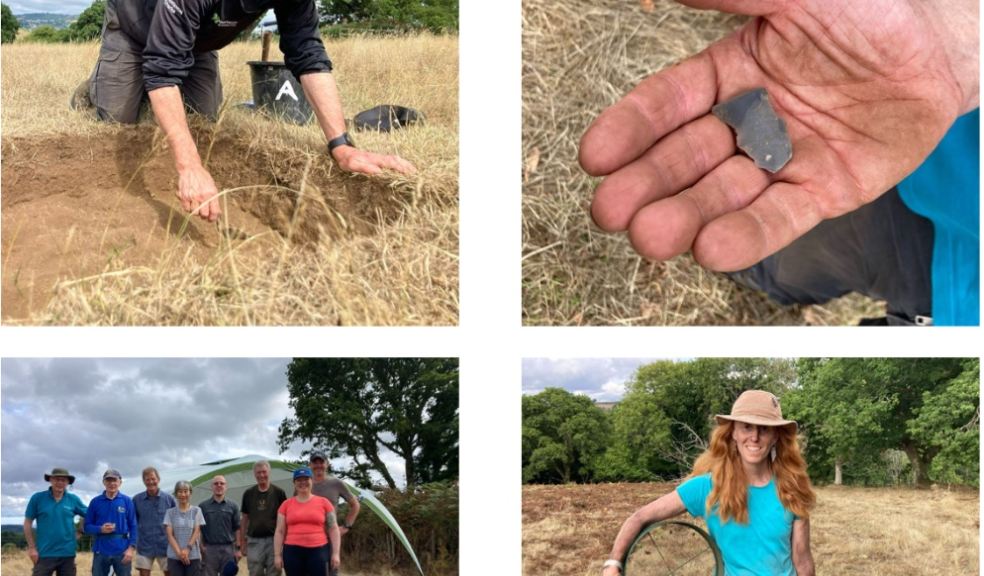
Clues to Dartmoor's past revealed in community dig
Archaeologists and volunteers have unearthed exciting finds which point to prehistoric activity in one of Dartmoor's prettiest valleys.
More than 80 flints, possibly dating to the late Mesolithic and early Neolithic period - around 6,000 to 3,000BC - were recovered during excavations on a farm near Lustleigh.
The exciting finds adds to Dartmoor's international reputation for being one of the finest archaeological and cultural heritage landscapes in Europe.
The test pitting programme was aimed at investigating a lithic scatter – an area within which stone tools and the debris produced by their manufacture are found– and expanding on the results of previous work undertaken there.
In early 2019 DNPA Archaeologists Dr Lee Bray, Andy Crabb and Emma Stockley carried out investigations on the site in the Wrey Valley as part of the Moor Than Meets the Eye landscape partnership scheme.
Excavations offered tantalising clues, in the form of a small collection of lithics, of prehistoric activity dating to the Mesolithic or Early Neolithic period but more work was needed to reveal a fuller picture.
Fast forward to 2022 and with the enthusiastic support and cooperation of the landowner, Lee returned alongside Emma, who is now researching Dartmoor’s hunter-gatherer past as part of her PhD at the University of Leicester, and a group of keen volunteers.
New test pits were dug near where artefacts were found in 2019. Alongside flints other discoveries from more recent periods included fragments of pottery, glass, slag and pieces of iron ore.
“The site poses interesting archaeological questions about how and why people used the landscape in a period about which little is currently known on Dartmoor,” said Dr Bray. “It is located on a ridge between the high moors to the west and the Wrey Valley immediately to the east; a location which may have provided hunter-gatherers with a good vantage point from which to observe game moving through the landscape.
“It was also quite surprising to find iron ore fragments – deposits of ore are usually found on the opposite side of the valley where they were mined between the 18th and 20th centuries.
“We hope that more detailed examination of the finds will reveal more detail about the nature of human activity on the site in different periods of the past.”
The dig was a community effort involving volunteers and the landowner and benefited from the help of Dr Laura Basell and Archaeology students from the School of Archaeology and Ancient History, University of Leicester; and Professor Mark Horton from the Royal Agricultural University.











